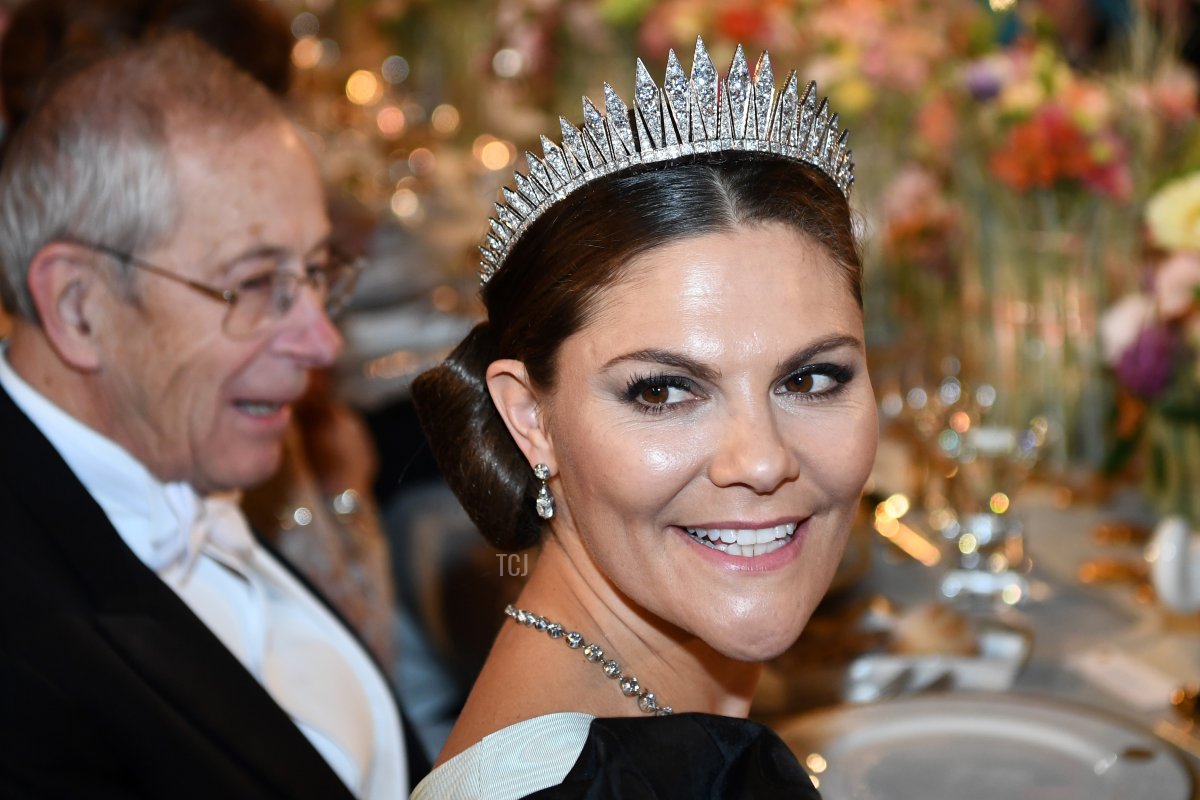
This year, King Carl XVI Gustaf of Sweden celebrates his Golden Jubilee, so we’ll have plenty of opportunities to see the Bernadottes sparkling at gala events! We’ll be talking a lot about Swedish royal tiaras this year, and we’re starting off with the history of a particularly glittering antique jewel: the Baden Fringe Tiara.

One of the sparkliest fringe tiaras in the business, the Baden Fringe Tiara has actually been historically associated with two royal Swedish Victorias. It’s a classic diamond sunray tiara, with wide diamond fringes and short diamond spikes. It’s both beautiful and sort of dangerous-looking, with its design mimicking sharp glinting rays of light, both illuminating and a little bit blinding.
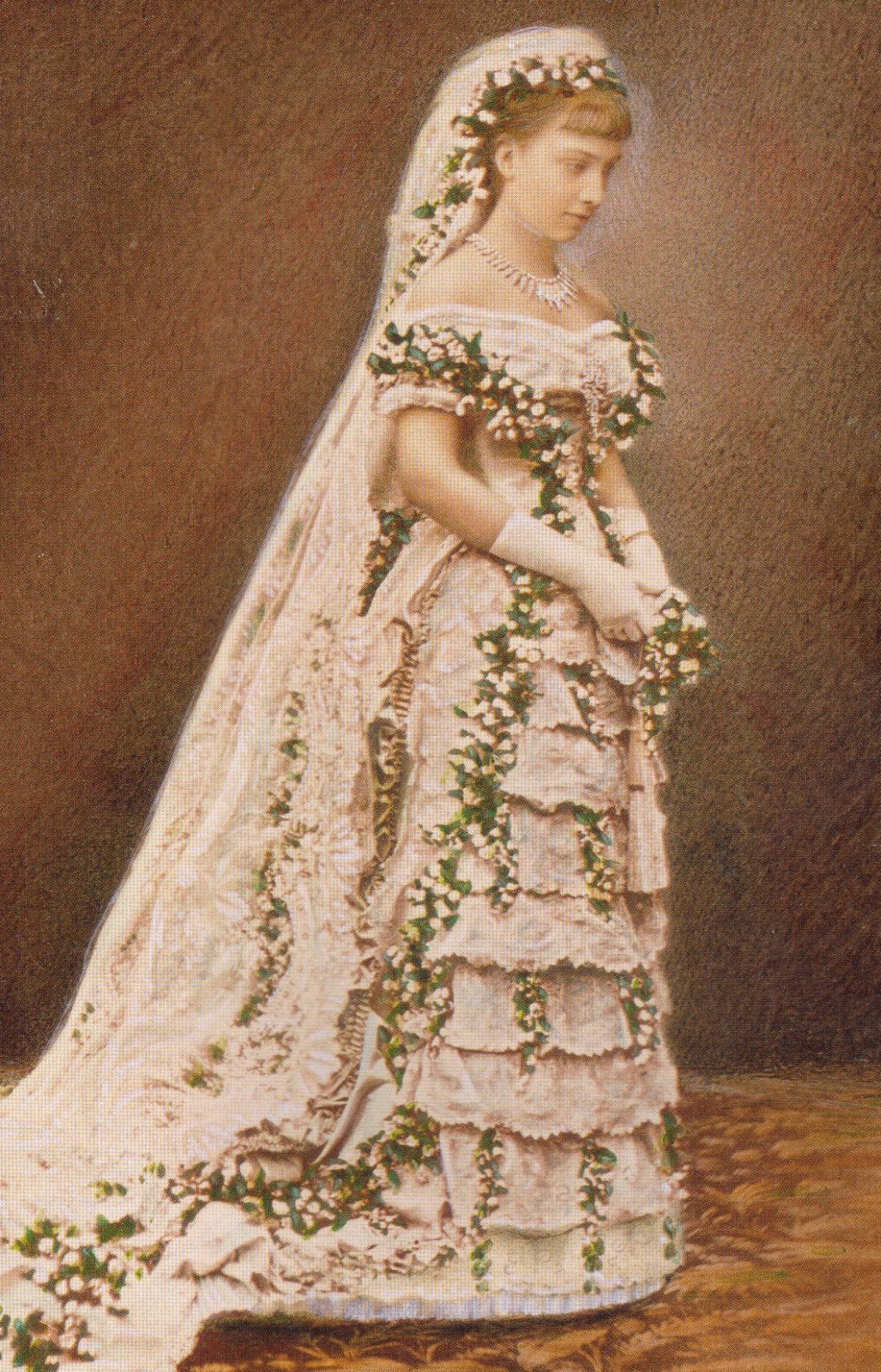
The first of the two Victorias to be associated with the tiara was Princess Victoria of Baden, who received the jewel from her parents, Grand Duke Friedrich I and Grand Duchess Luise of Baden, when she married Crown Prince Gustaf of Sweden in 1881. The new Crown Princess Victoria wore the tiara on her wedding day, but not in tiara form. Instead, she wore the piece as a necklace, a conversion made possible by releasing a spring mechanism within the piece. When worn as a tiara, the spring is engaged to provide the tension needed to allow the fringes and spikes to stand upright.
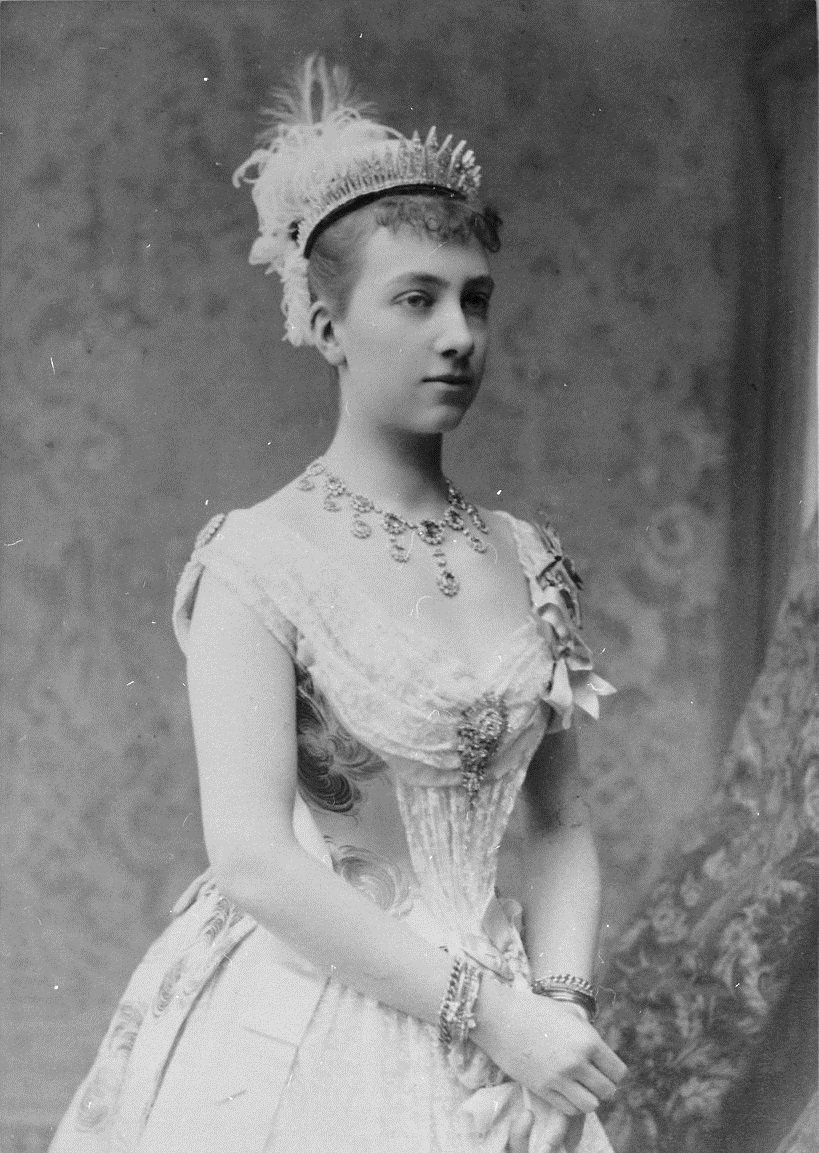
Young Victoria also wore the jewel as a tiara, as you can see in this portrait of her taken early in her royal marriage. She’s also wearing her diamond and pearl corsage brooch, which also has a sunburst design motif, as well as the necklace from the Leuchtenberg Sapphire Parure.

Here, you’ll spot Crown Princess Victoria wearing the diamond fringe as a corsage ornament. She’s particularly laden with jewels here—wearing the Leuchtenberg Sapphires, the sunburst brooch, and her diamond stars, among other pieces—because she’s attending the wedding of her eldest son, Prince Gustaf Adolf, and Princess Margaret of Connaught at St. George’s Chapel, Windsor in June 1905.
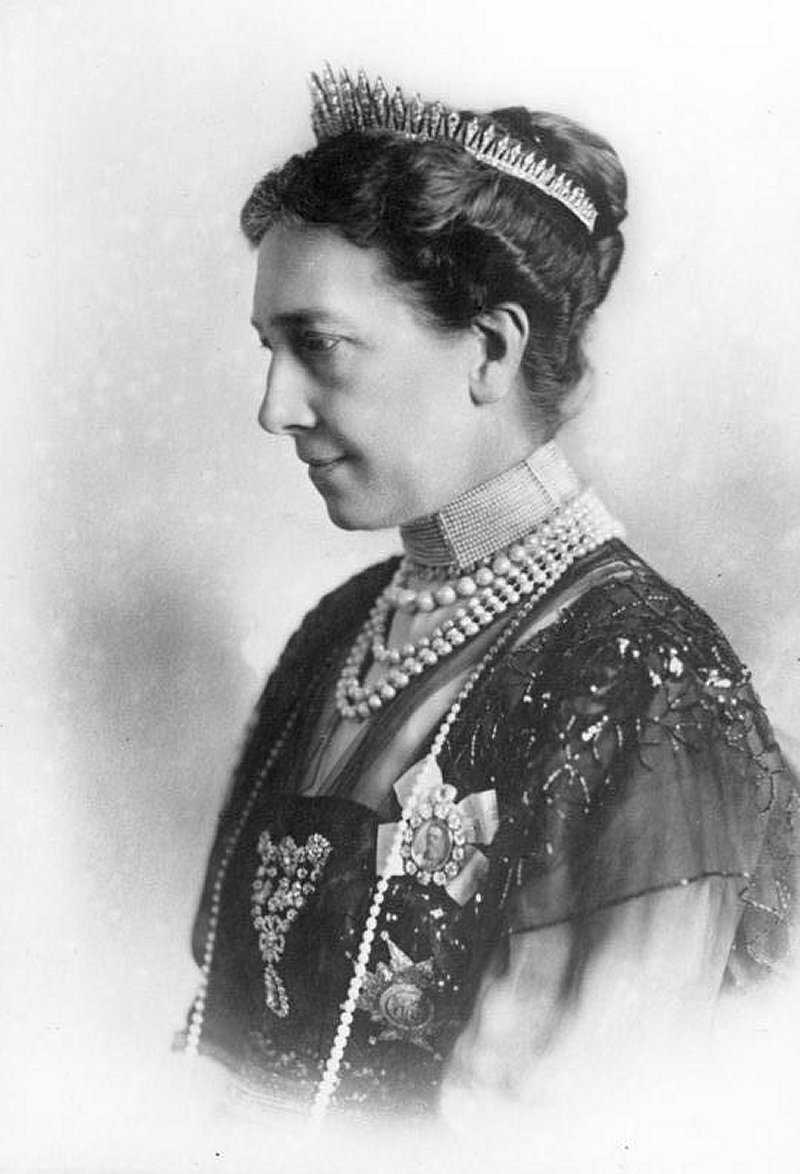
Victoria became Queen of Sweden two years later, in 1907, when her husband ascended to the throne as King Gustaf V. She continued to wear the diamond fringe tiara throughout his reign. In this portrait, which dates to the 1920s, she wears the jewel as a tiara, pairing it with diamonds and pearls, including Queen Josefina’s Diamond Stomacher.
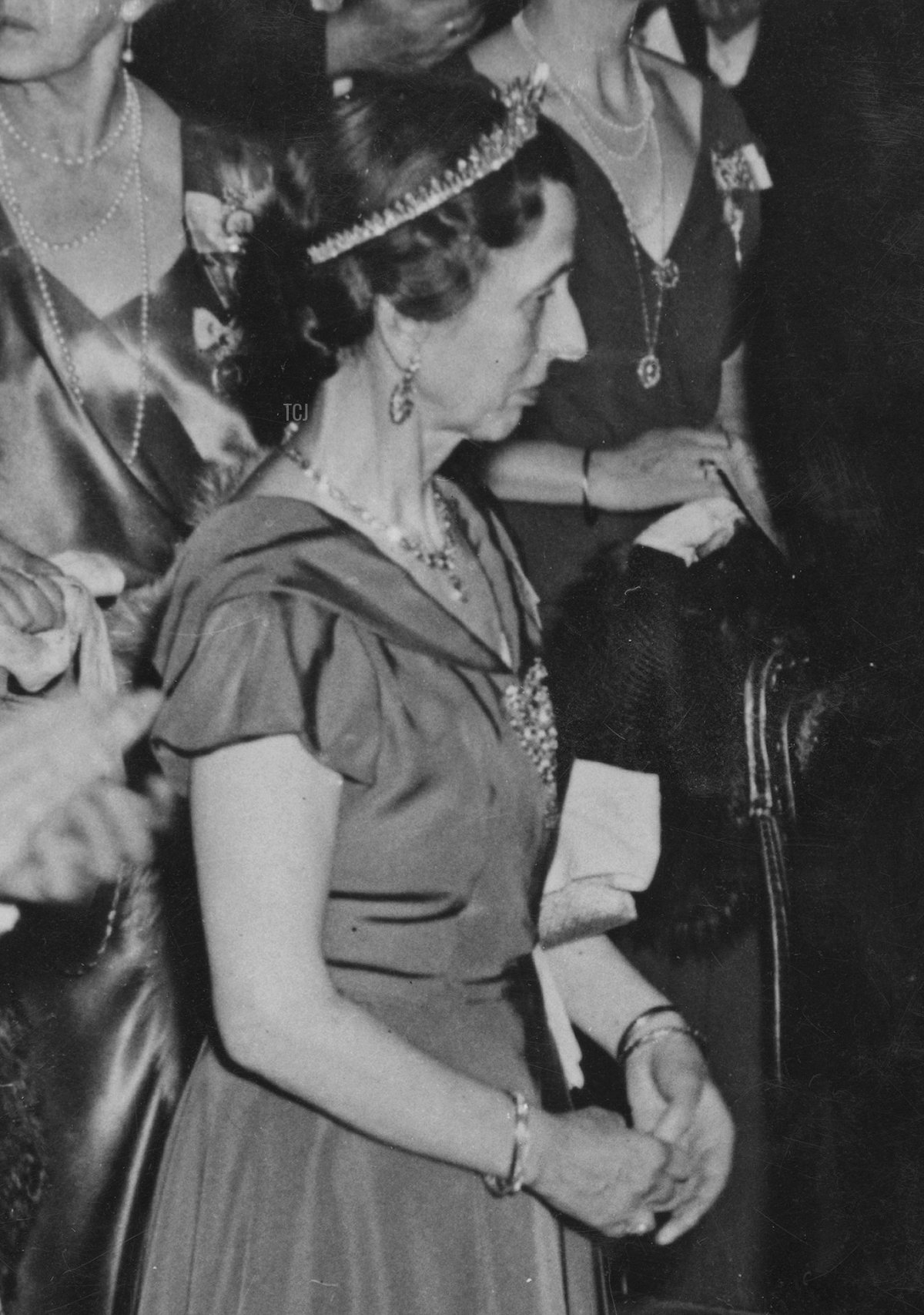
When she died in 1930, Queen Victoria bequeathed the diamond fringe tiara to the family foundation, ensuring that the tiara would stay with her descendants for generations to come. The next person to make major use of the tiara was Victoria’s daughter-in-law, Louise, Gustaf Adolf’s second wife. Here, Crown Princess Louise wears the tiara for the Nobel Prize ceremony in December 1948.
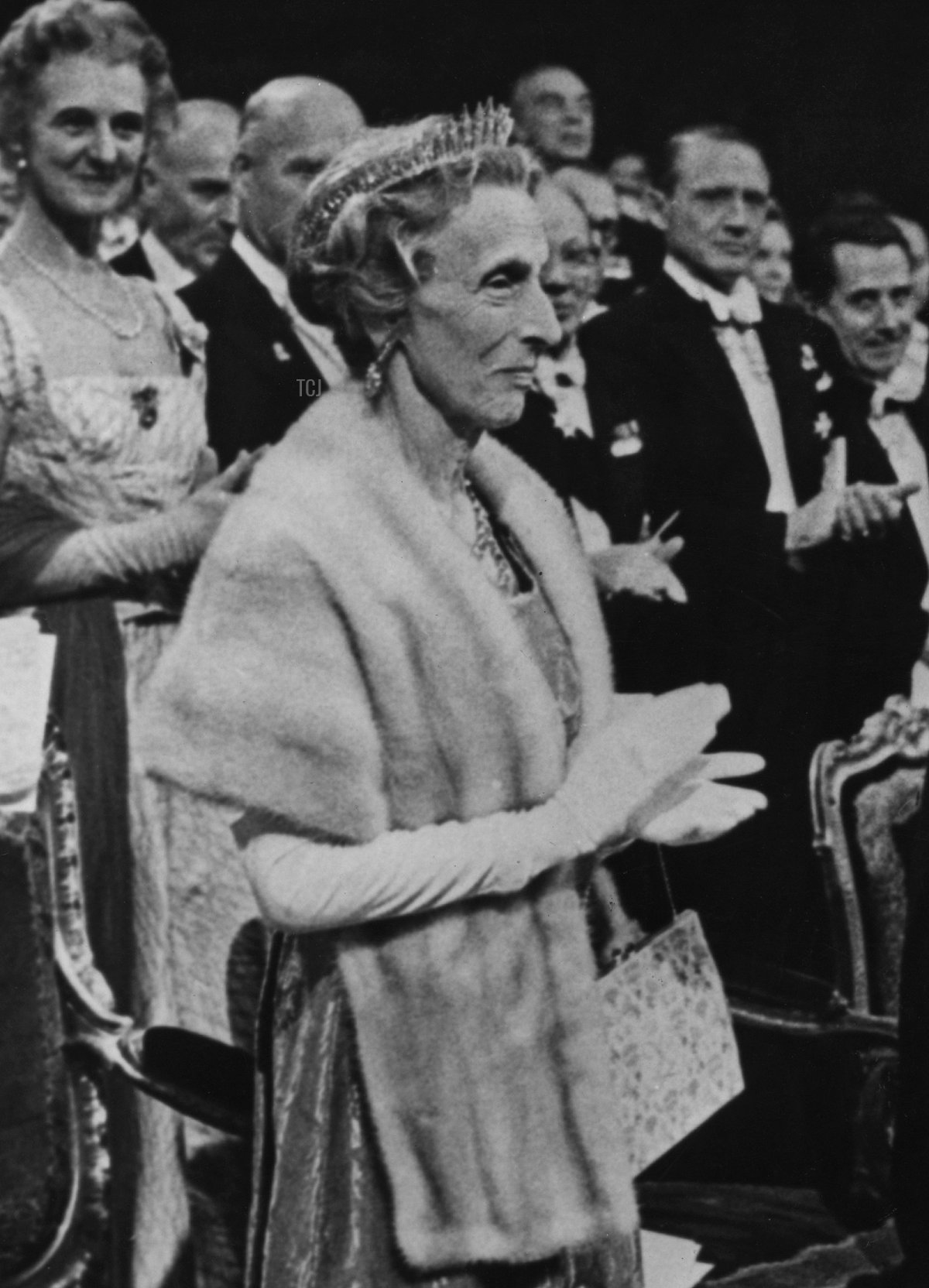
Louise became Queen of Sweden when Gustaf Adolf succeeded his father in 1950. She’s wearing the tiara here in December 1964 during her last appearance at the Nobel Prize ceremony. The event was her final official engagement. She was already suffering from heart problems, and she passed away only a few months later.
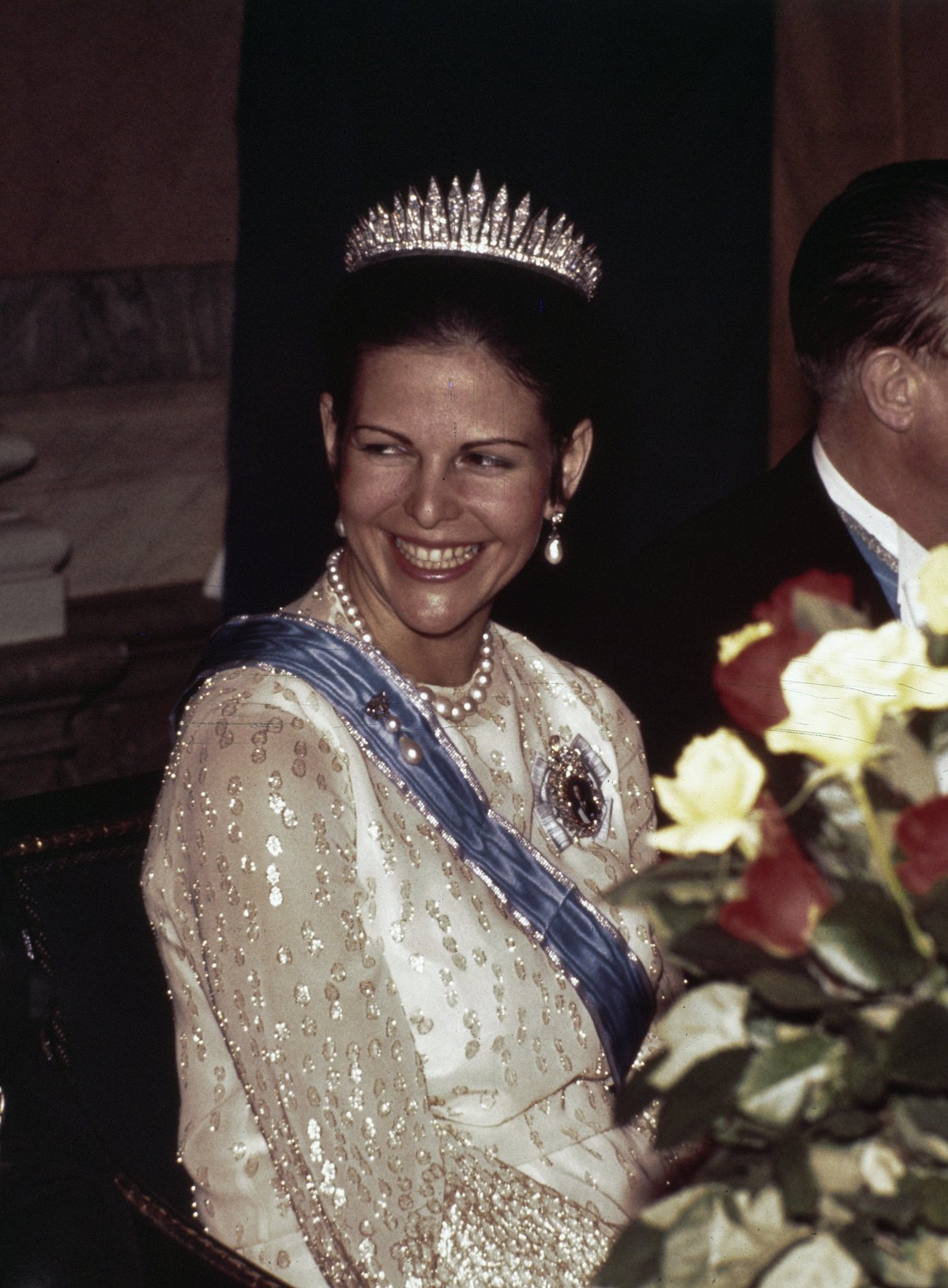
The next Queen of Sweden, Silvia Sommerlath, began wearing the diamond fringe tiara shortly after her marriage to King Carl XVI Gustaf in 1976.
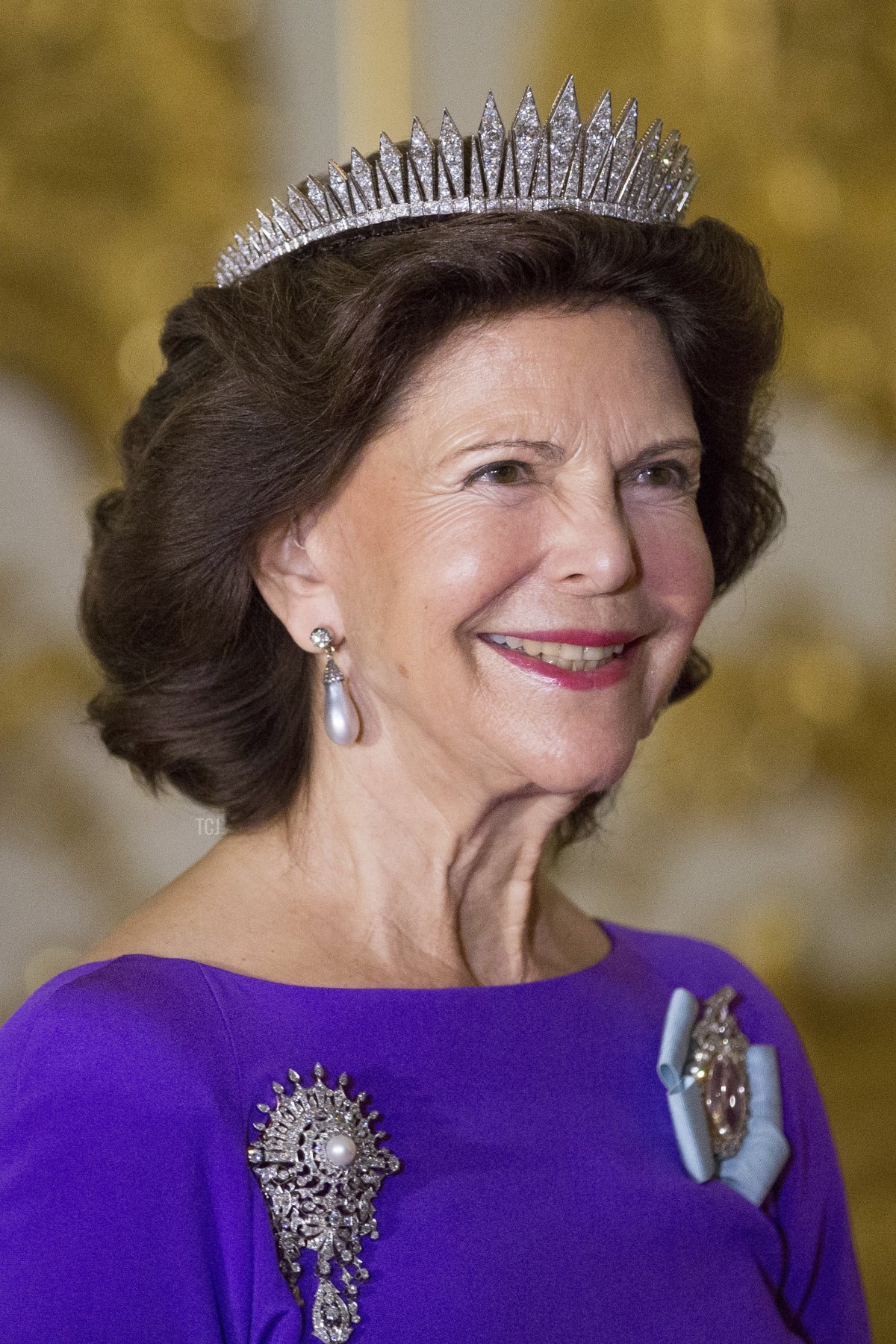
The diamond fringe has never been one of her most-worn tiaras, but Queen Silvia does bring it out on occasion. Like Victoria of Baden before her, Silvia is German, and she appropriately chose to wear Victoria’s jewels—the diamond fringe tiara and the sunburst brooch—for a dinner in Berlin in October 2016.
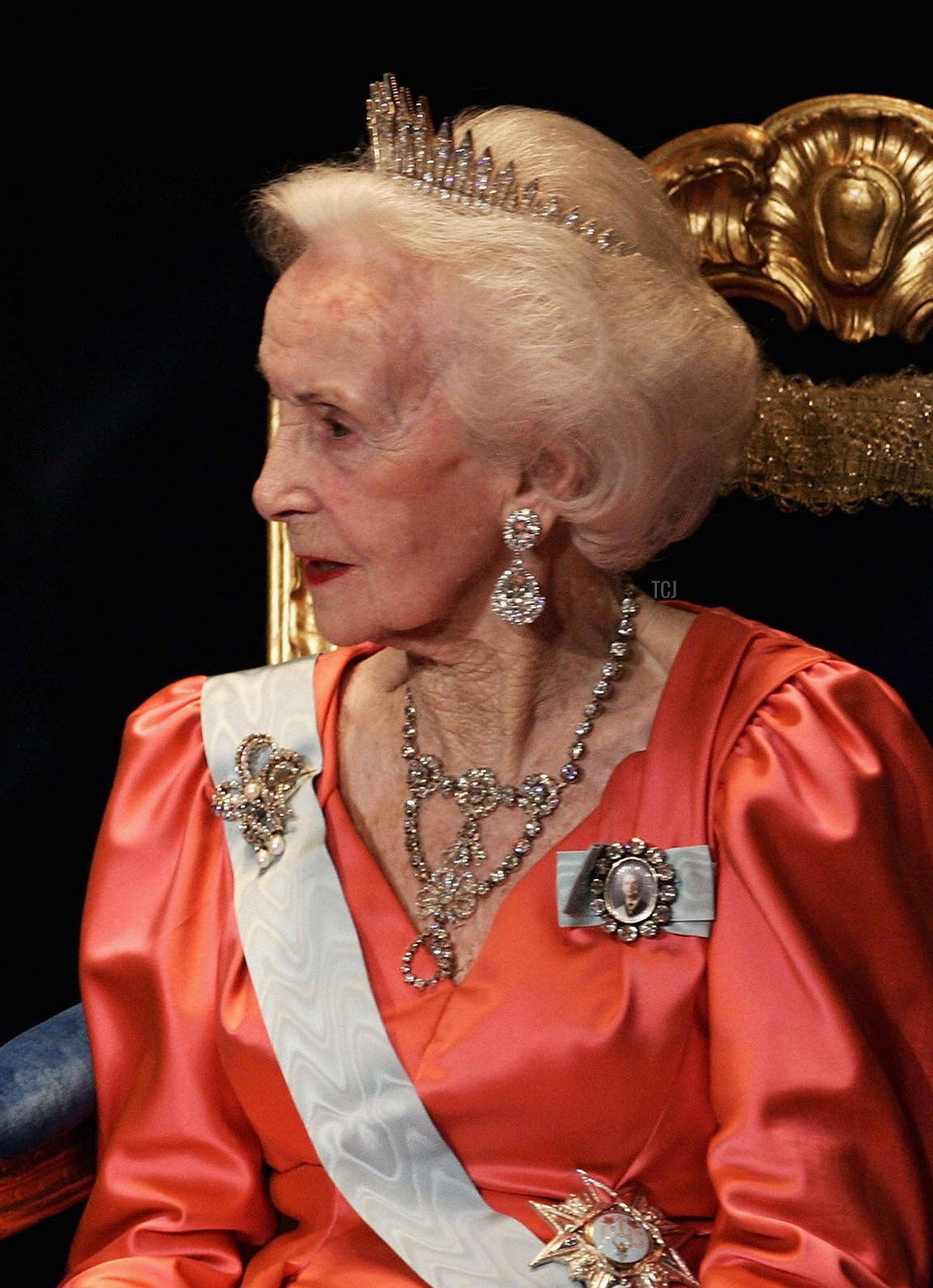
For several years, the most consistent wearer of the tiara was Princess Lilian of Sweden, the wife of Prince Bertil. She wore the tiara so frequently that the base of the piece was wrapped in gray velvet to match her silver hair. Here, she wears the tiara at the Nobel Prize ceremony in 2004, along with Queen Josefina’s Diamond Stomacher Necklace.
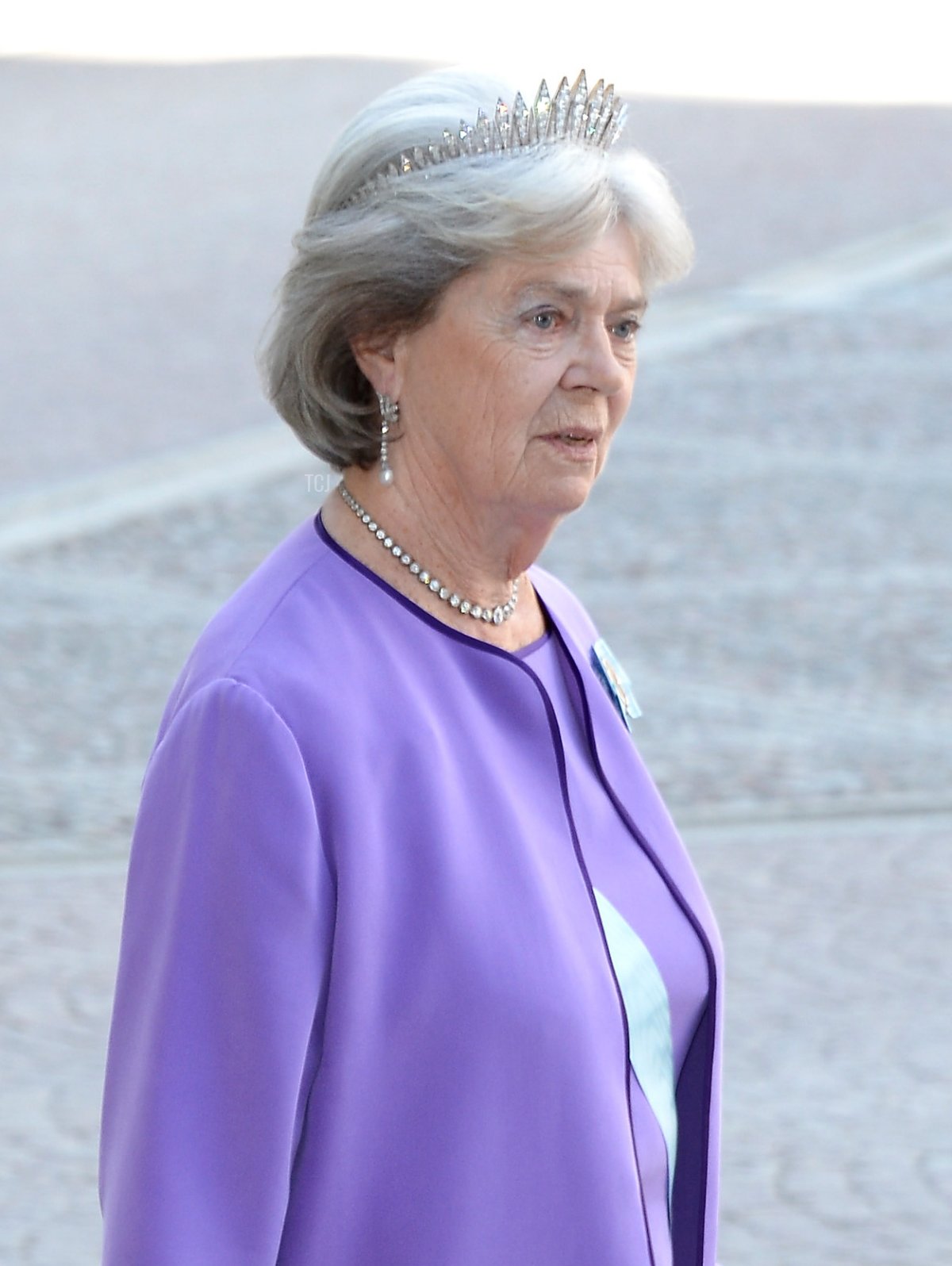
Several other family members have worn the tiara, too, including all four of King Carl XVI Gustaf’s sisters. Here, Princess Margaretha wears the tiara at Princess Madeleine’s wedding in June 2013.
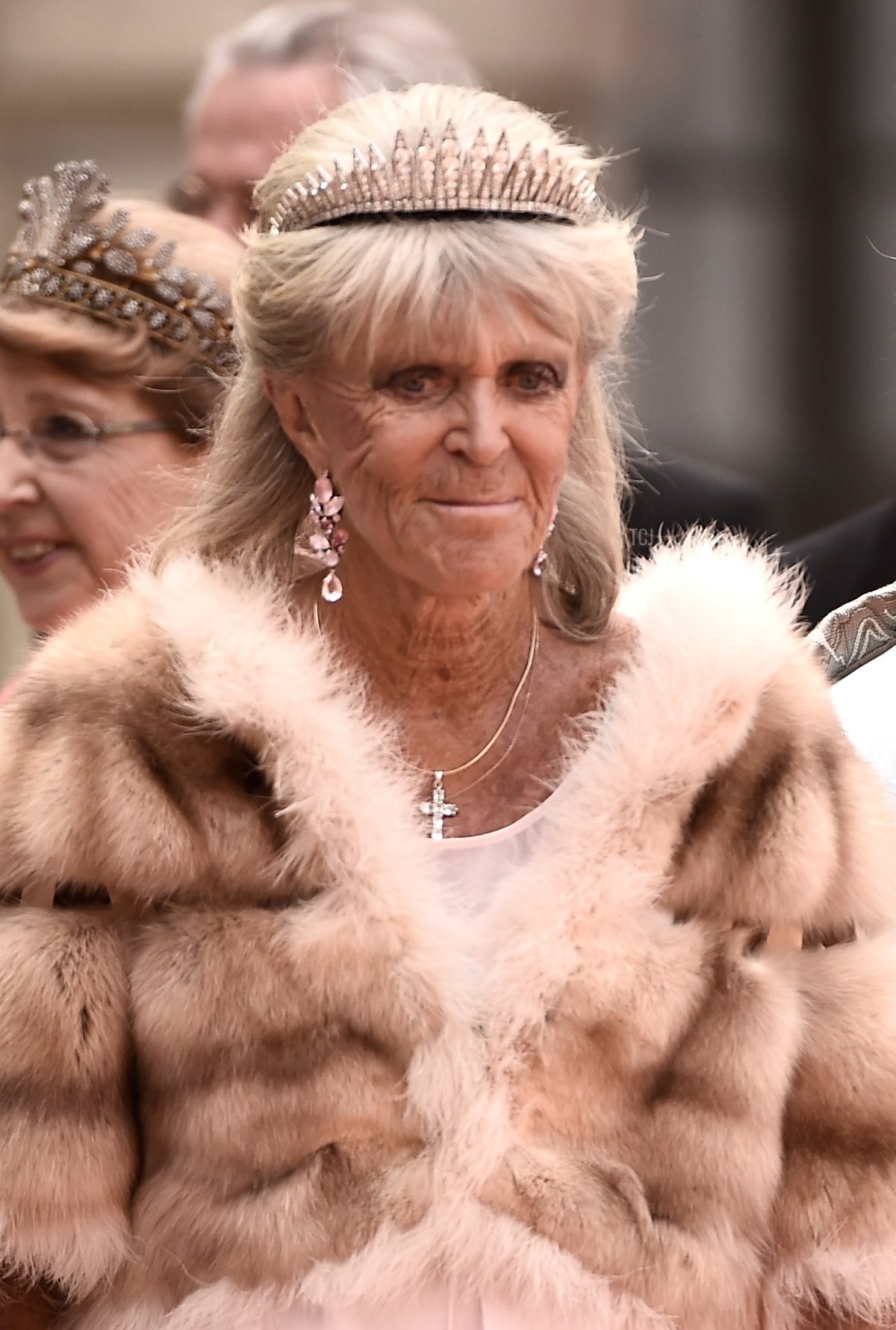
And here, Princess Birgitta wears the fringe tiara at Prince Carl Philip’s wedding two years later, in June 2015.
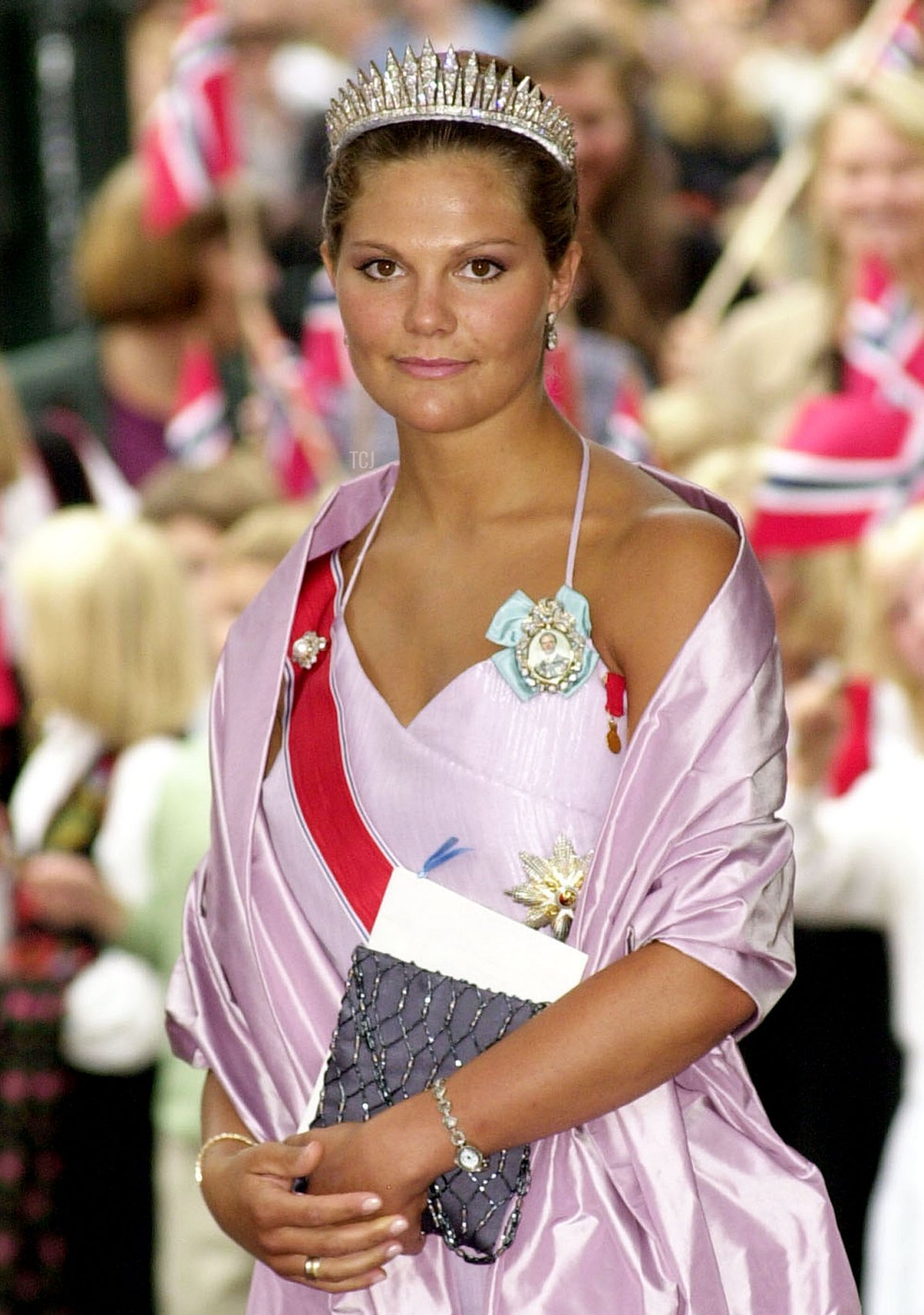
But without a doubt, the person now most associated with the tiara is the second Victoria mentioned above: Crown Princess Victoria, daughter and heir of King Carl XVI Gustaf of Sweden. She’s been wearing the diamond fringe faithfully for more than two decades. One of her earliest appearances in the tiara took place at the wedding of Crown Prince Haakon and Crown Princess Mette-Marit of Norway in Oslo in August 2001.
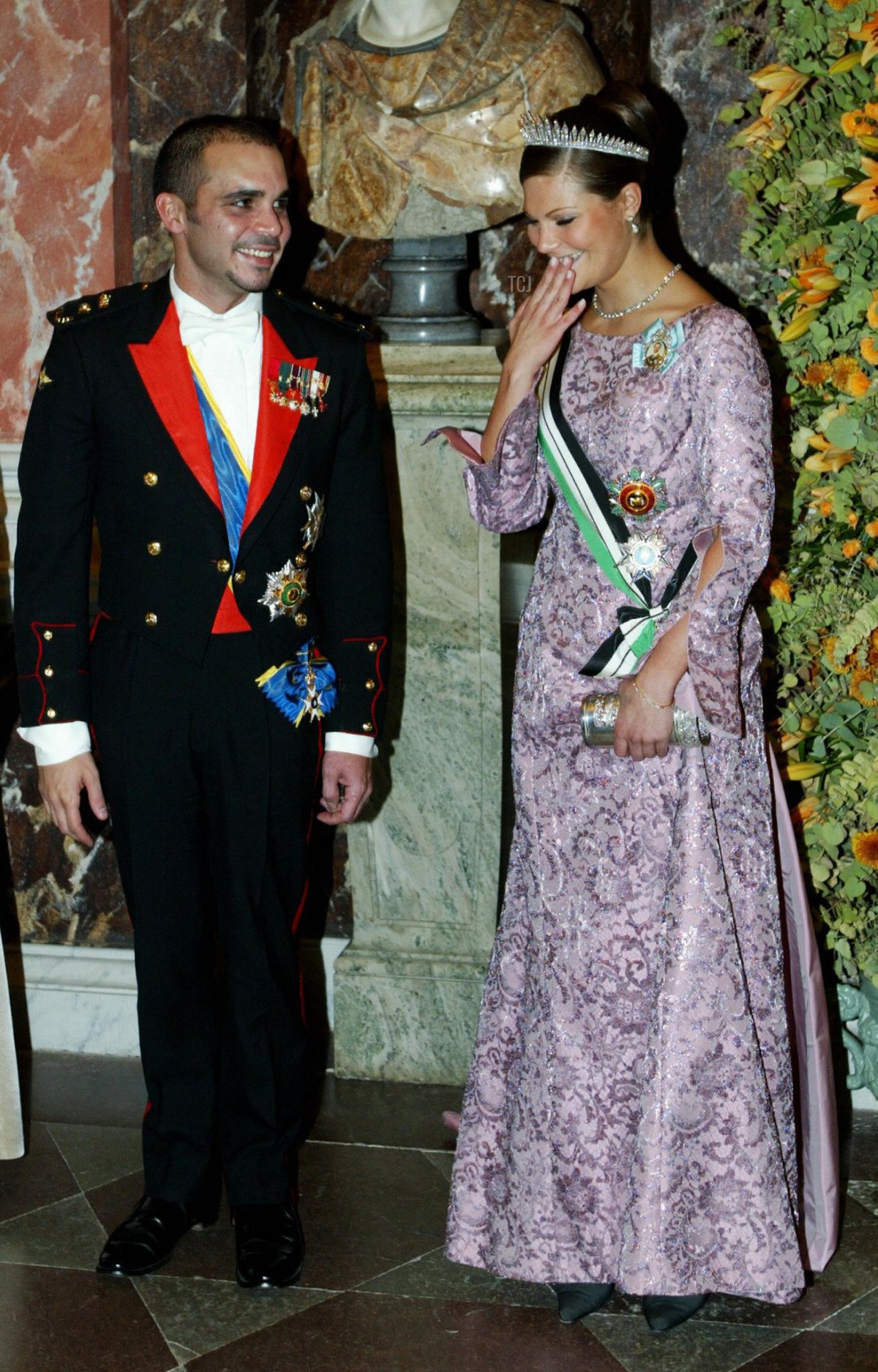
Since then, she’s worn the tiara for all sorts of gala occasions, from Nobel Prize ceremonies to royal weddings to state visits. Here, she wears the tiara for a state banquet at the Royal Palace in Stockholm during a state visit from the King of Jordan in 2003.
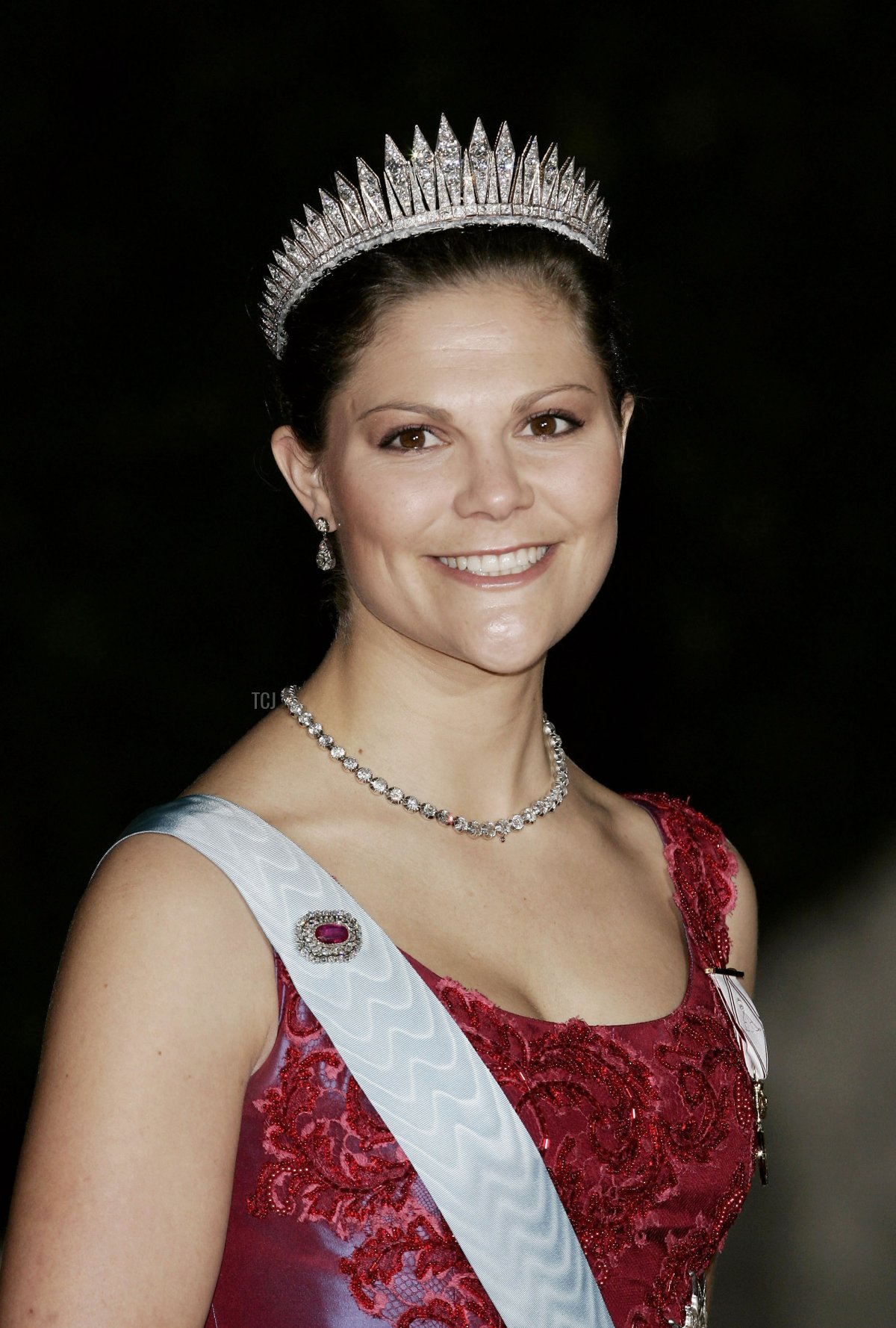
She selected the fringe tiara for Prince Albert II’s enthronement celebrations in Monaco in November 2005.
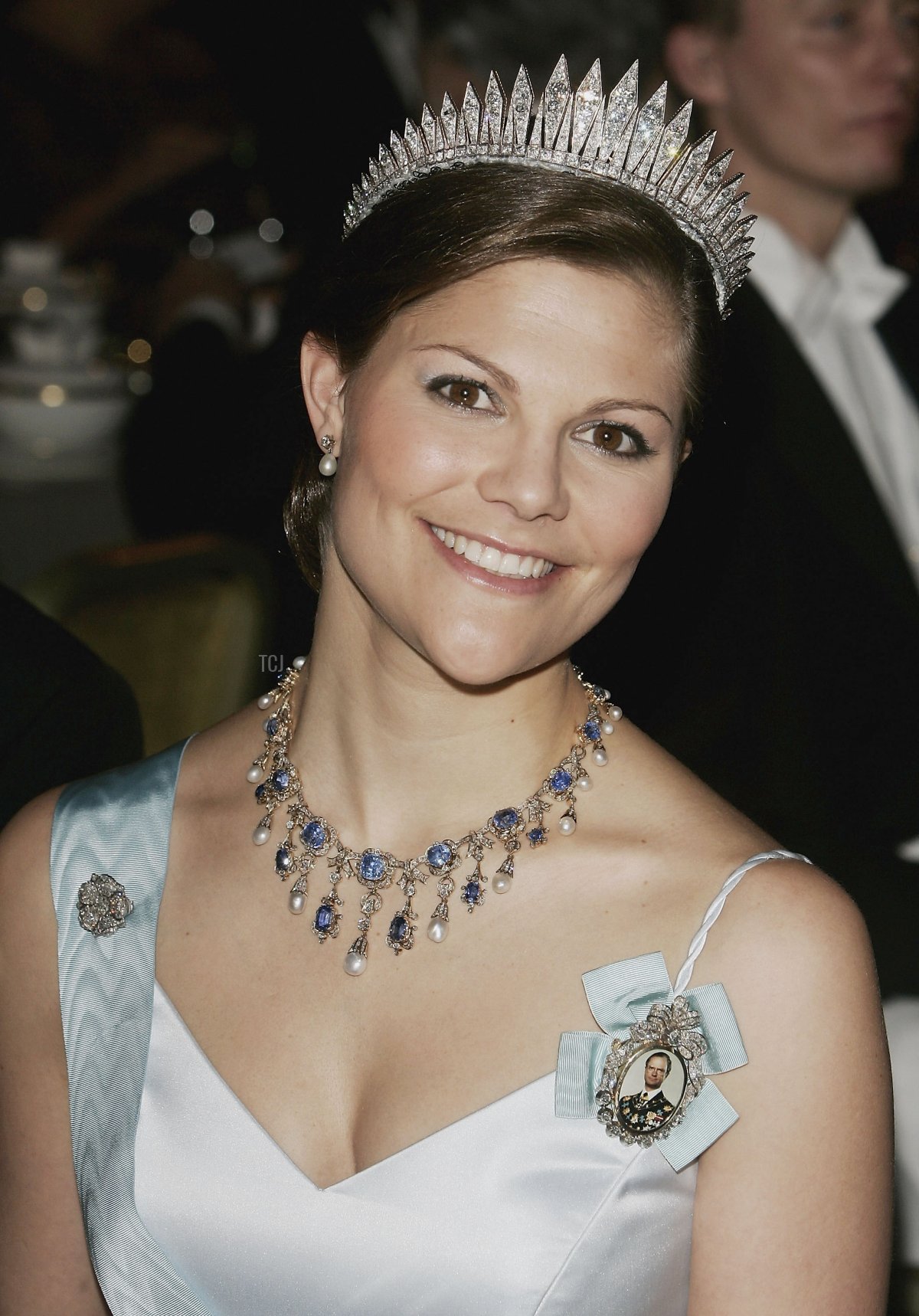
And she wore the tiara for the Nobel Prize ceremony and banquet in December 2005, pairing it with another jewel associated with Victoria of Baden: the Processional Necklace.
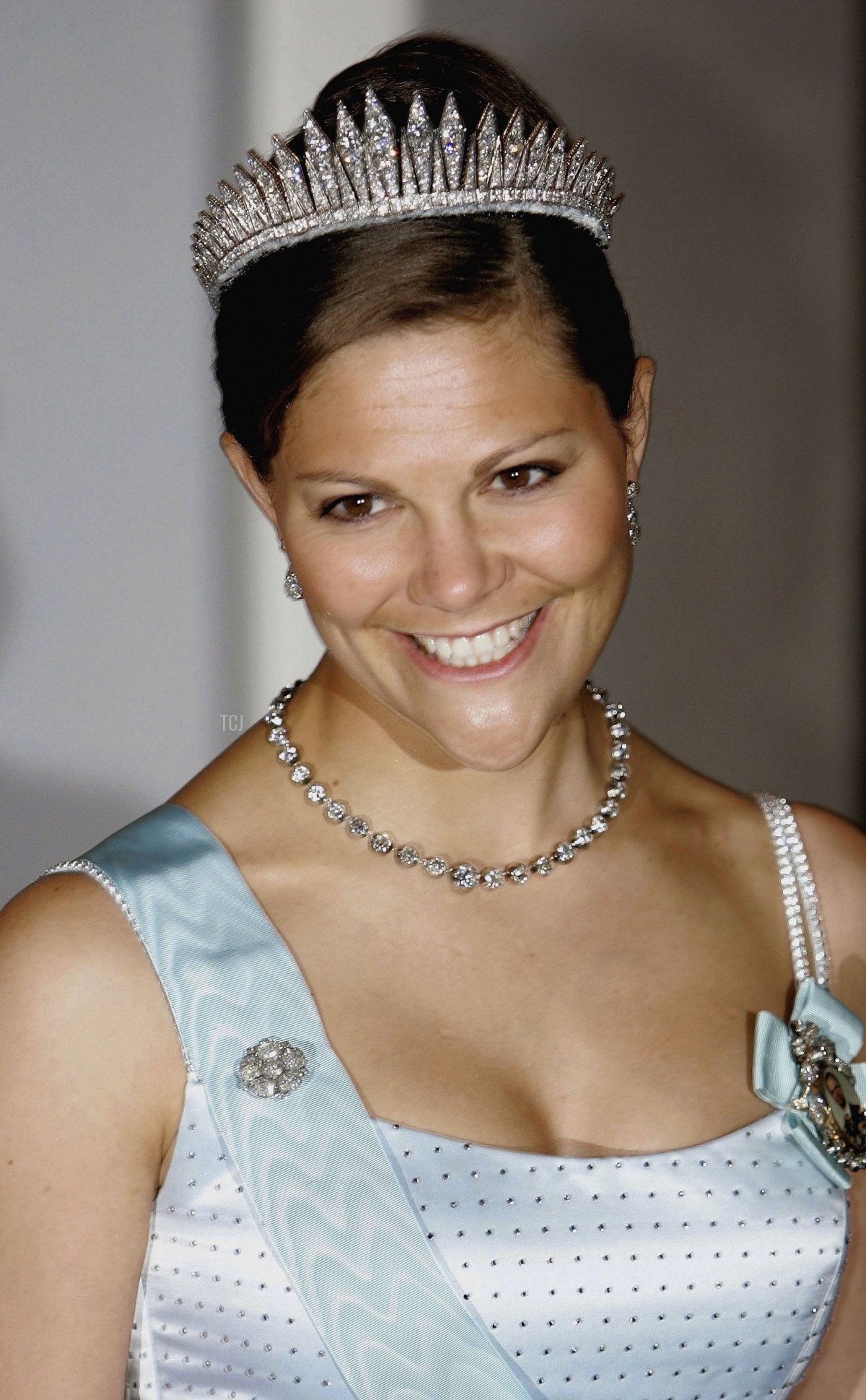
In April 2006, Victoria wore the fringe tiara for a gala celebrating her father’s 60th birthday. Victoria has noted that the tiara “very beautiful, very stylish, a little hard, but easy to wear.”
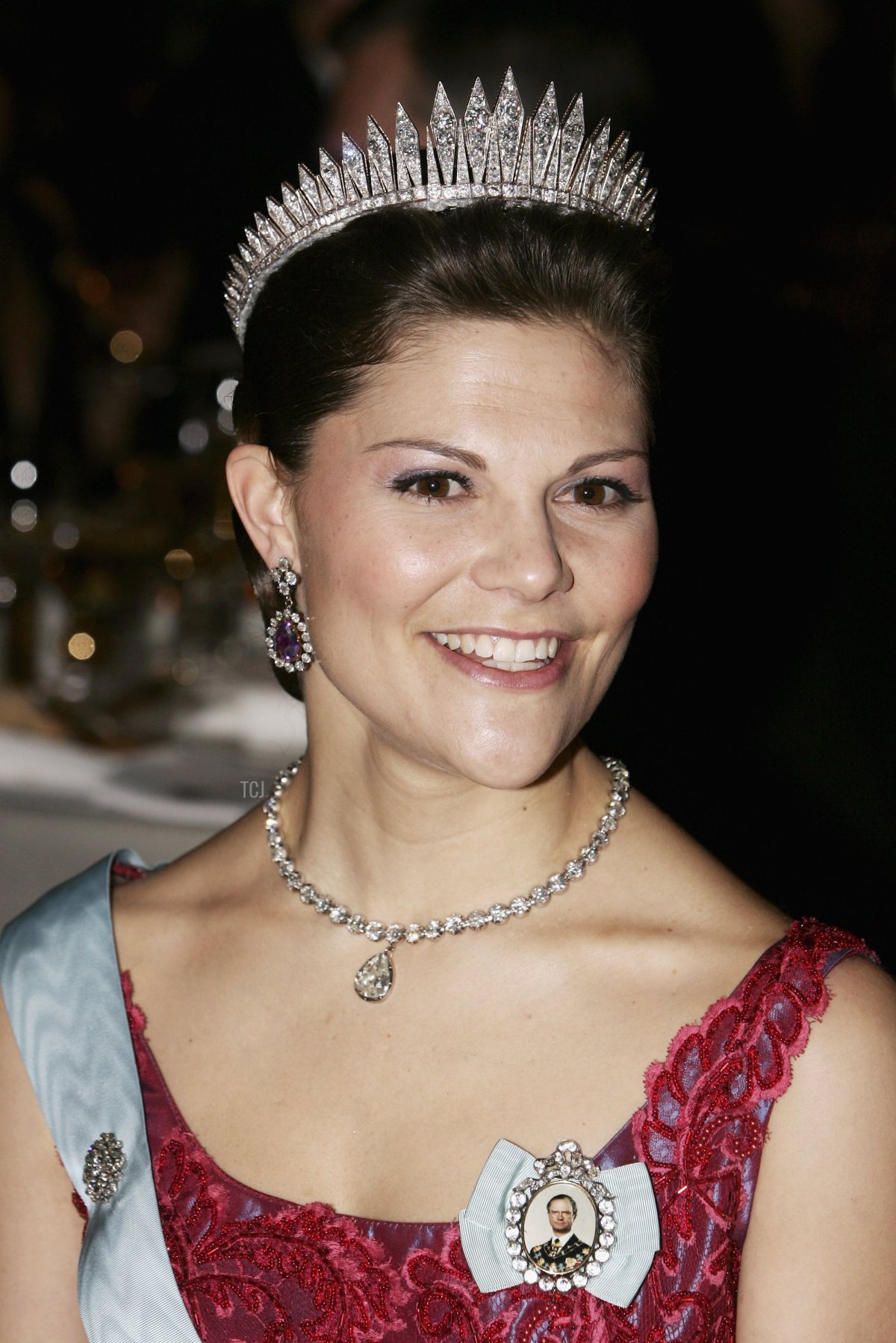
In December 2006, Crown Princess Victoria wore the tiara once again at the Nobel celebrations, pairing it with the earrings from the Napoleonic Amethyst Parure. You’ll note that, in all of these early appearances, the base of the tiara was still wrapped in gray velvet to match Princess Lilian’s hair.
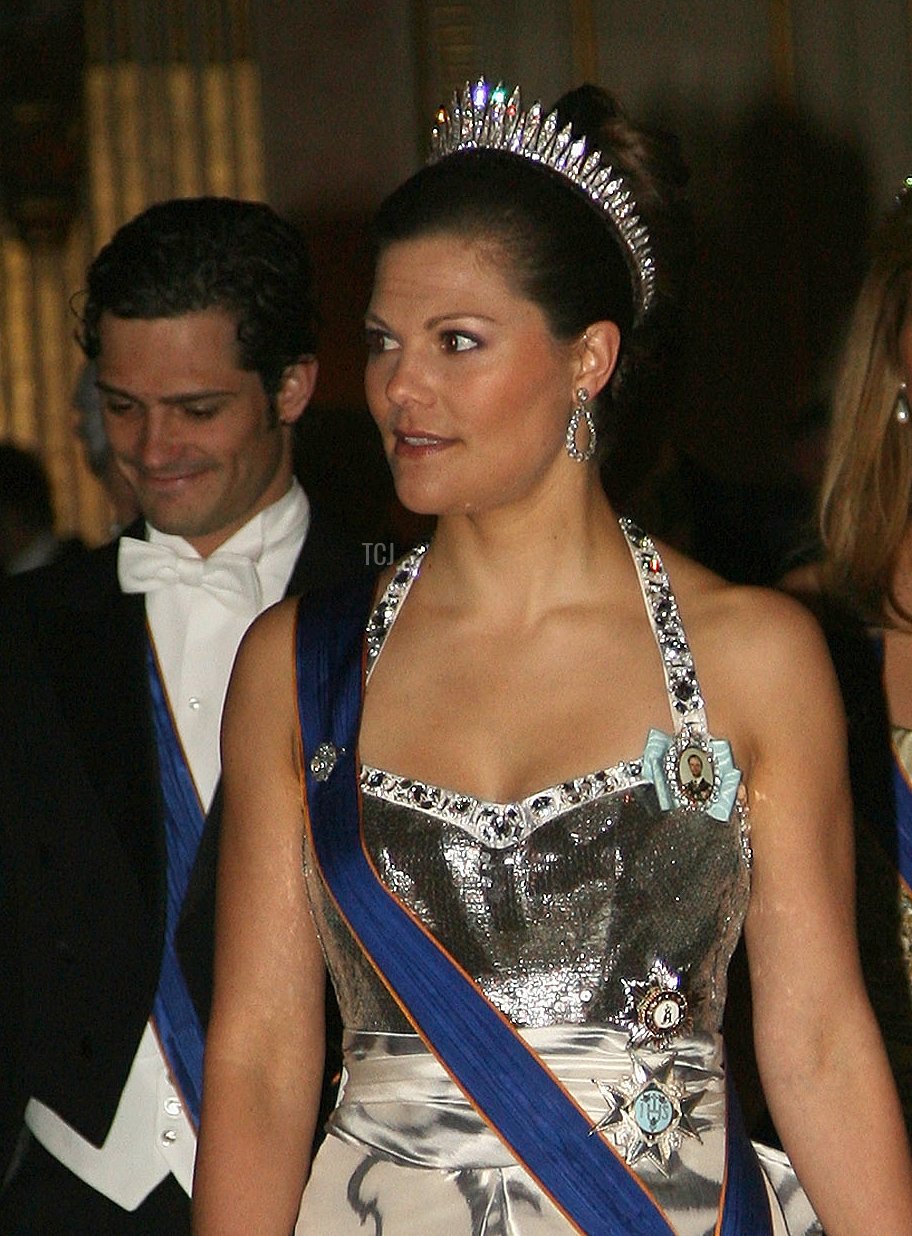
By 2008, the velvet wrapping on the tiara’s base was changed to a dark brown color to match Victoria’s hair, linking her even more strongly with the jewel. Here, she wears the tiara during the Luxembourgish state visit to Sweden that April. On this appearance, the tiara was placed further back on her head, emphasizing the halo shape of the fringe. (Notably, she’s also wearing the frames of the Vasa Earrings on this occasion.)
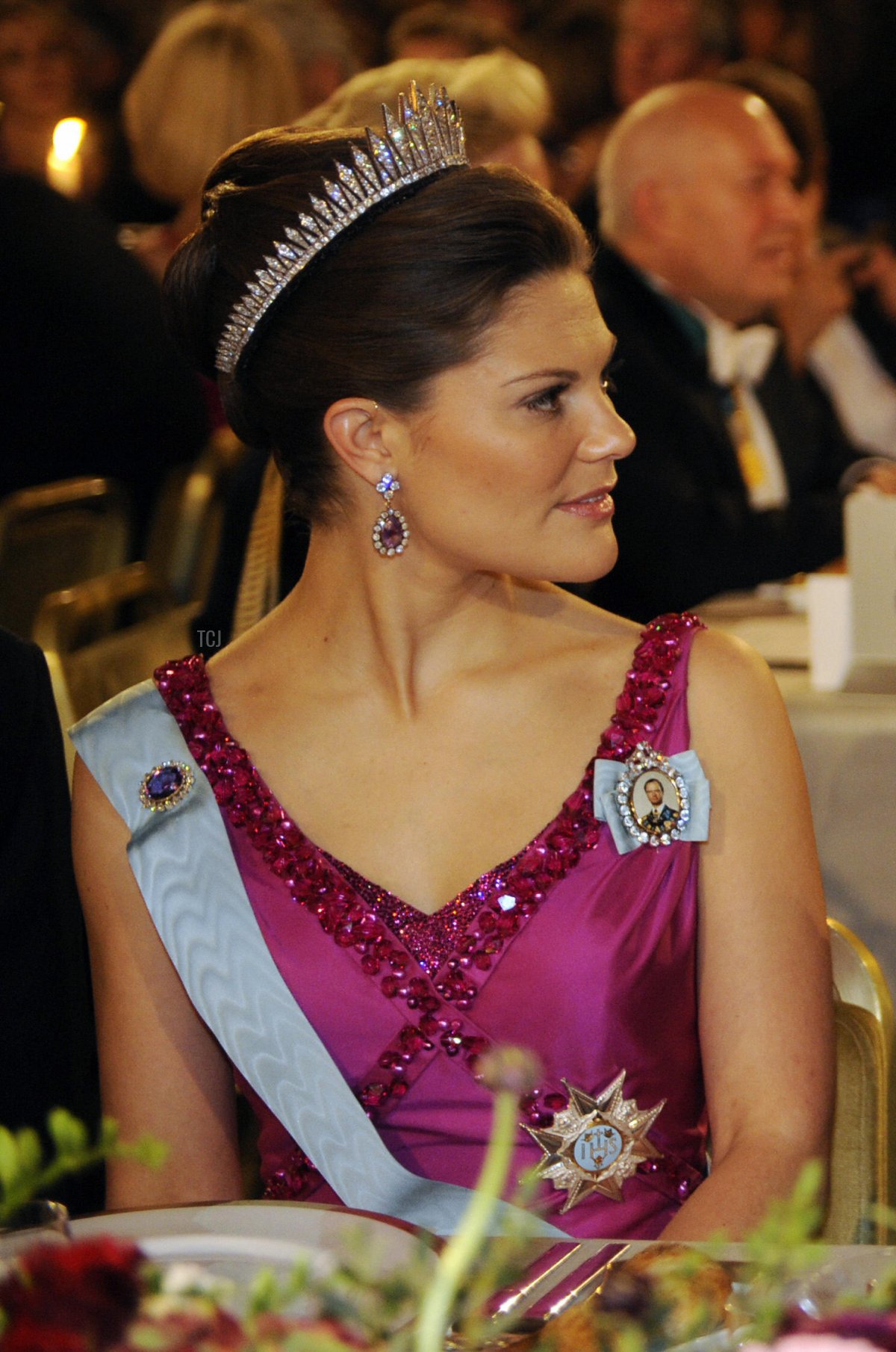
The positioning of the tiara was similar for this appearance at the Nobels in December 2008. The tiara has especially long sides that wrap around the wearer’s head to create that halo effect.
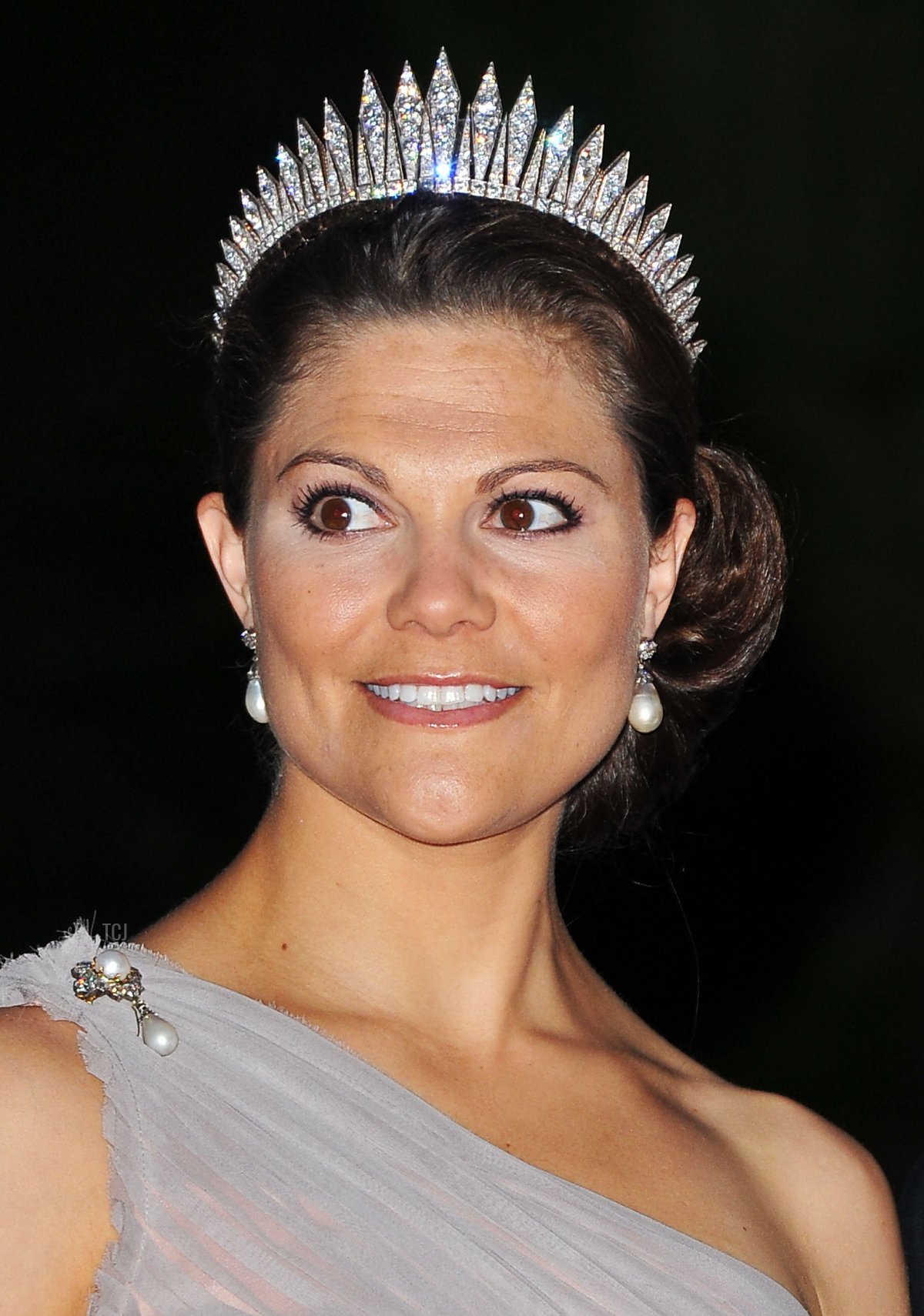
The tiara continued to sparkle on Victoria’s head into the next decade, with notable appearances during the princely wedding celebrations in Monaco in July 2011…
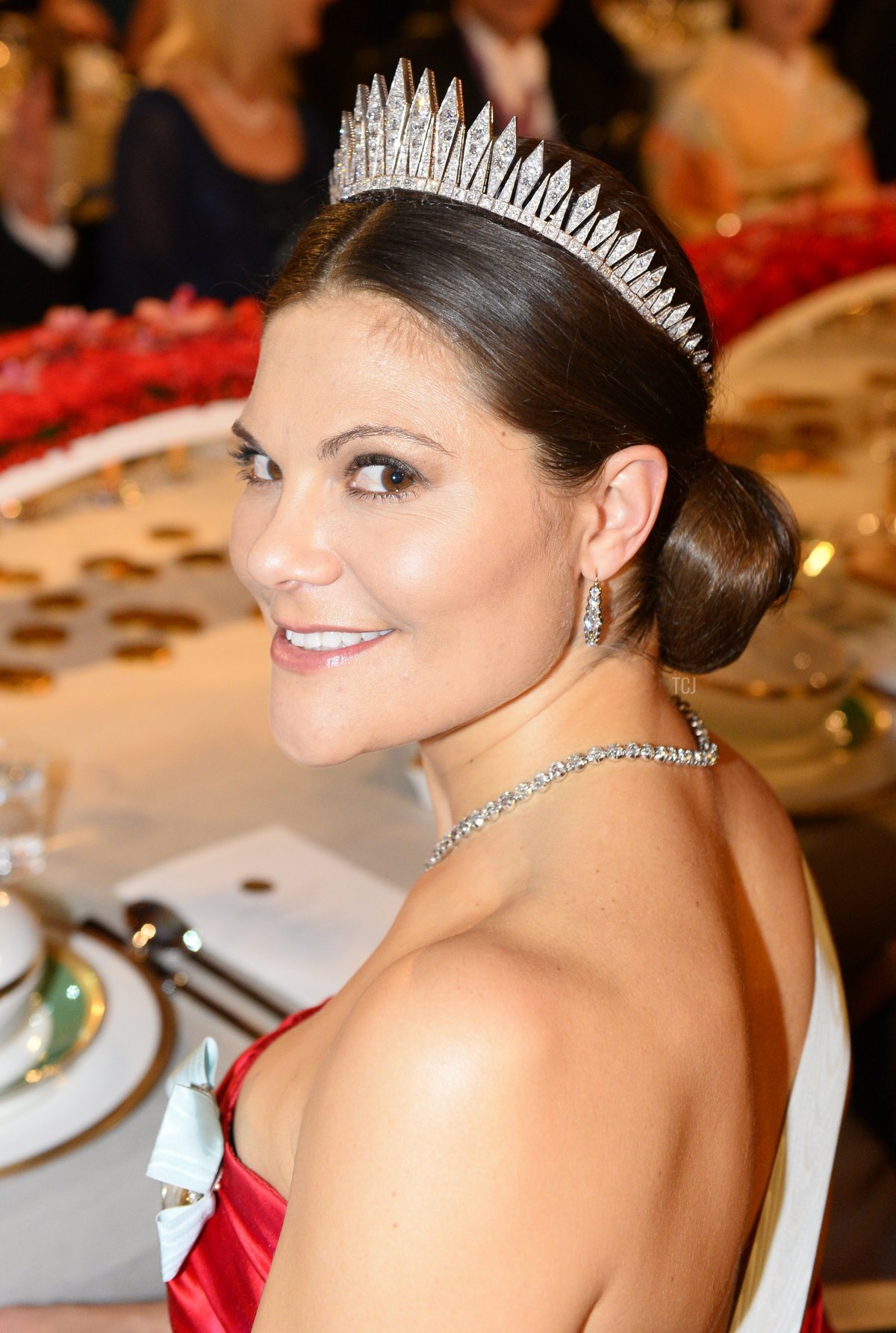
…and at the Nobel Prize celebrations in December 2014.
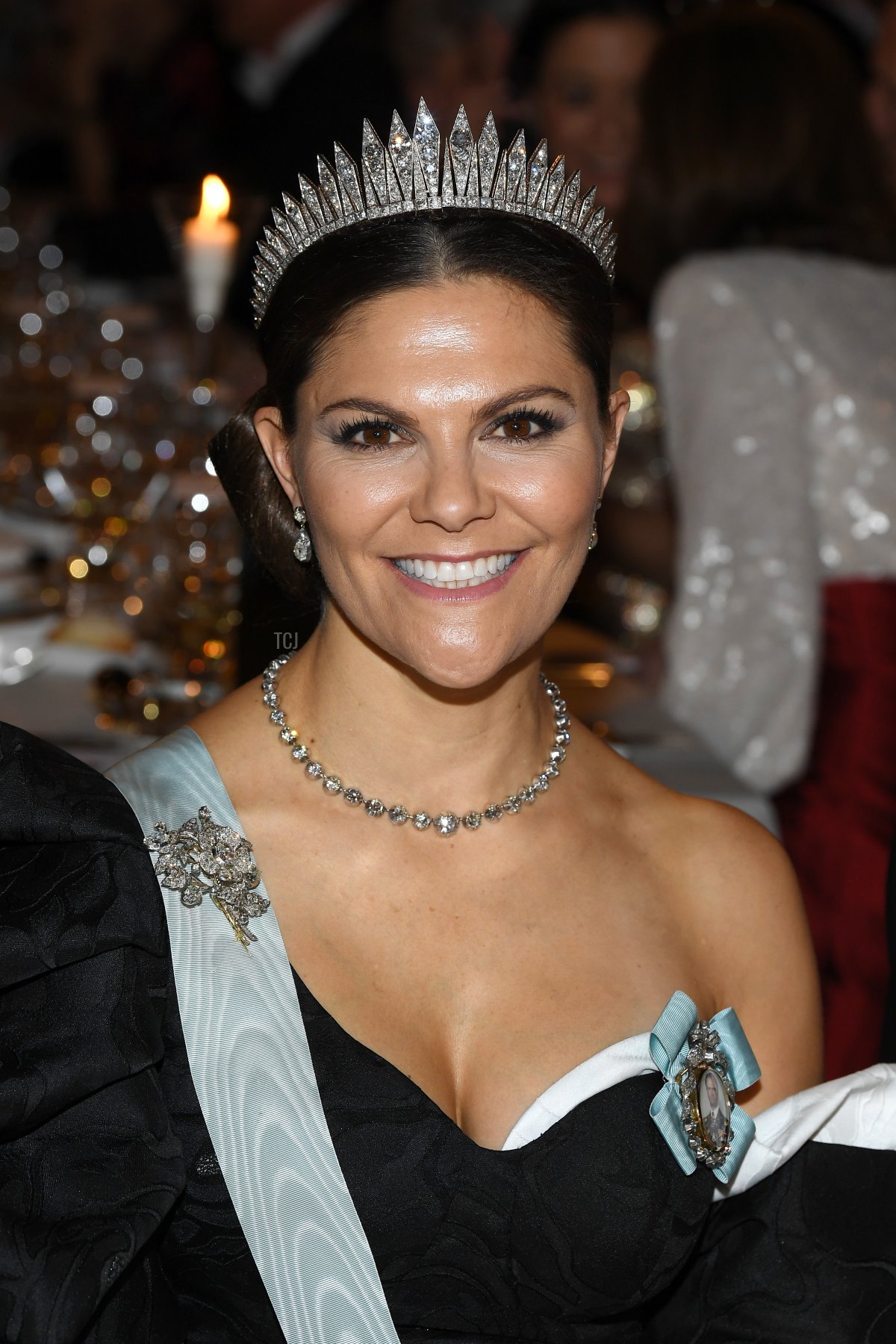
One of Victoria’s most recent outings in the tiara came in 2019, when she wore the jewel for the Nobel Prize ceremony and banquet, pairing it with a voluminous black and white evening gown.
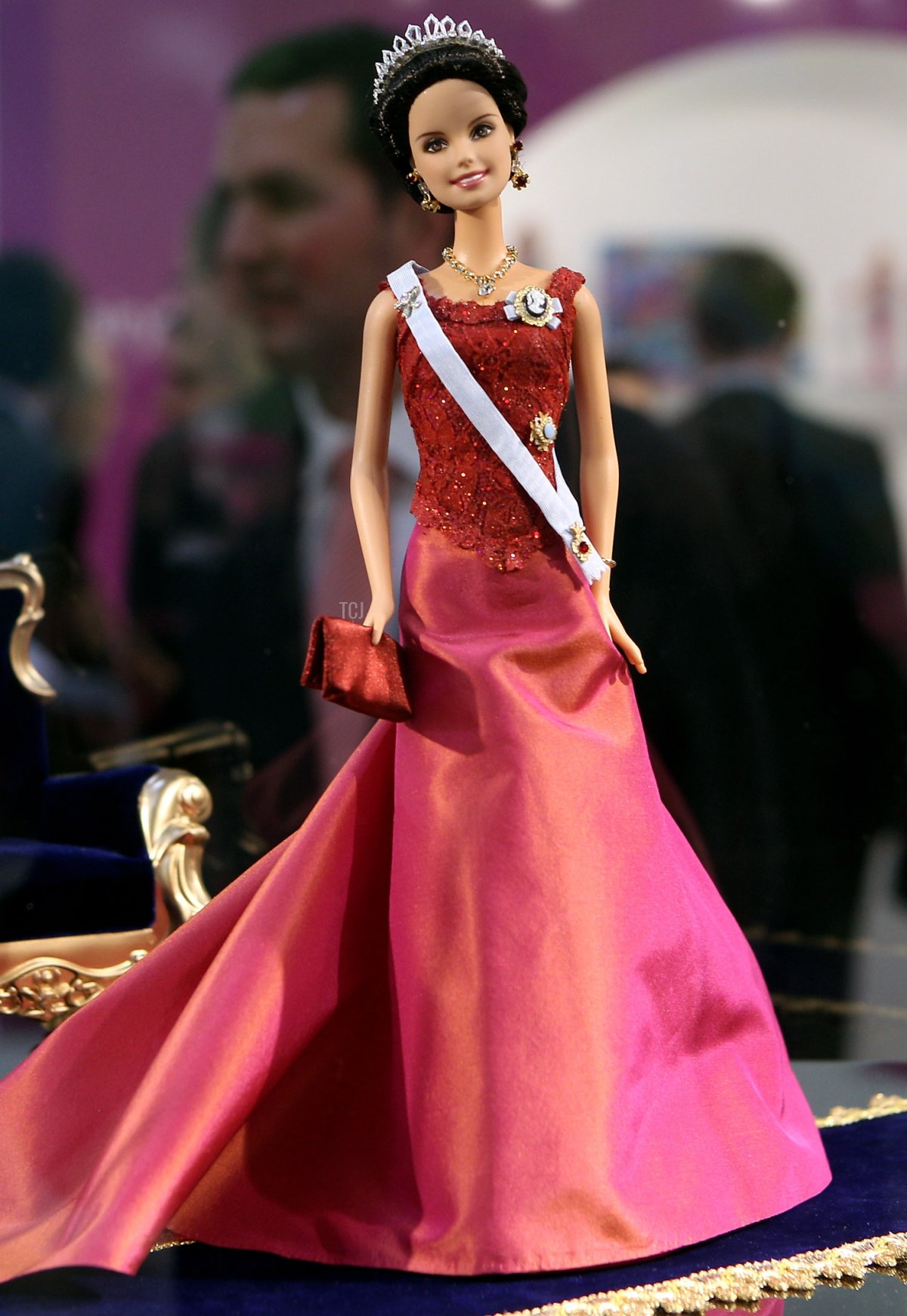
The tiara has become so closely associated with Victoria that, when a Barbie doll was made in the image of the crown princess, the doll wore a miniature version of the diamond fringe tiara. How fantastic is that?
Leave a Reply
You must be logged in to post a comment.